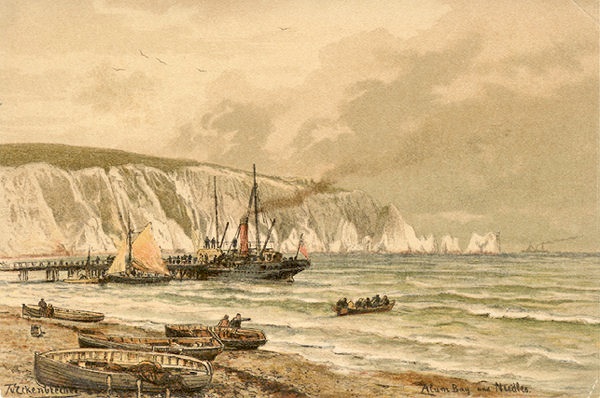Alum

Come back later
Mordants are chemicals used to help natural dyes bind. They are almost all metal compounds, and many are fairly toxic. Alum is one of the more common mordants (and fairly non-toxic), and is the only one used with any regularity in pysankarstvo.
While many refer to vinegar (acetic acid) or “setting powder” (citric acid) as mordants, they are not. They are acidifying agents.
Taras Horodetsky wrote about his experiments with several different alums here (excerpts from two letters to fellow pysankary):
“Mordants––that's alum (there are aluminum––an aluminum-potassium compound––iron, and chrome) or some other salt. I have only the aluminum and iron alums. Thus my "experiments" have been only with these two. As a rule, aluminum alum does not change the color of dyes, but only improves dye adherence and slightly lightens the dye solution. Iron alum makes the dye darker. Decoctions should be made according to the directions on the apothecary's packet––in a water bath. The more plant material you use and the less water, the better. I add the alum to the strained decoction. I dissolve the alum first in boiling water, and then add that solution to the dye–so that I don't get crystals of the salt (alum) in the dye itself, because these will cause blemishes on the pysanka.”
“I then dissolve separately in a small amount of boiling water a bit of alum (about the size of a match head), and then add this mixture to the dye. It is important to avoid getting any crystals of alum into the dye mixture, because crystals may cause spots on the pysanka.”
****************
IUPAC Gold Book was helpful, but not very detailed: "Substance that fixes a dyestuff in or on a material by combining with the dye to form an insoluble compound" it said.
Other references led me to an on-line version Baker's Principles of biological microtechnique (Chapter 11, in particular “The Indirect Attachment of Dyes to Tissues”). The book discusses not only laboratory dyeing, but also commercial fabric dyeing, which both follow the same principles, and it is a surprisingly interesting topic. A web site which is a bit more recent, but concentrates on histology (as opposed to fabrics), can be found here (it has more concise explanations of the chemistry): http://web.archive.org/web/20070814015208/stainsfile.info/StainsFile/theory/mordant.htm
A mordant, according to Baker, is a molecule which can bond both with the dye molecule, and with the fabric. The dye-mordant complex which is formed is called a lake, and is insoluble. In order to form a lake, the mordant must have a valency of at least 2, and it binds to the dye molecule via two types of bonds, depending on the structure of the dye molecule: covalent (with a hydroxyl group) and coordinate covalent (with a double bonded oxygen). Because many mordants (like aluminum and iron ones) have valencies greater than 2, the mordant can bind with more than one molecule of dye.
(NOTE: the difference between the two types of bonds is the source of the electrons. In a covalent bond both molecules contribute electrons and they share; in a coordinate bond, one molecule contributes both electrons and the two of them share.)
How does the mordant bind to the fabric? The same way it binds to the dye, via covalent and coordinate bonds.
This covalent bonding is not only very strong (covalent>ionic>>hydrogen), but has the added advantage of making the dye (in its mordant bound form, aka lake) insoluble. This means that a dye becomes fast–it will no longer dissolve in water. This is important, as dyed fabrics need to be washable to be practical. Pysanka dyes, as most of you have noted, are not water fast; if you accidentally get a bit of water on an unvarnished pysanka, one made with aniline dyes, the color will run.
One thing that the textbook (and other chemistry sources) emphasize is that all mordants are metals: "By definition, however, a mordant must be a metal. If a chemical is not metallic, it is not a mordant."
The Wikipedia article had a banner across the top of the page, noting that "This article or section is in need of attention from an expert on the subject." And I figured out at least one reason why: their list of mordants. The article authors had included several non-metals, including tannic acid and urea. Tannic acid, according to Baker (p 223) "is often used as intermediary between fibre and basic dye. Cotton and linen have a remarkable power of taking up this acid from aqueous solutions, and they can subsequently be coloured by basic dyes, for which they have no direct affinity. The compound between tannic acid and a basic dye has not, however, the chemical complexity of a lake. The word 'mordant' loses some of its meaning if used to include tannic acid and similar substances." And urine (or rather, urea, the active chemical) is a solubility-enhancing and moisture-retaining additive to dye baths, not a mordant.
Sources if you wish to read up even more:
Stains Files: http://web.archive.org/web/20080430160649/stainsfile.info/StainsFile/siteindex.htm
Baker: http://www.archive.org/details/principlesofbiol01bake
Back to Main Chemistry page
Back to MAIN Pysanka home page.
Back to Pysanka Index.
Search my site with Google
Alum Bay, Isle of Wight, app. 1910
Alum and Mordants



